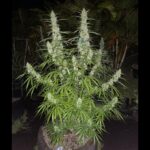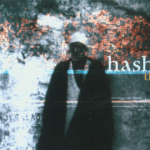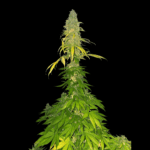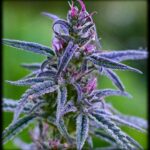A big blindspot in current thinking about cannabis landraces is lack of knowledge about the cultural context of these crops. Not only enthusiasts but most academics and researchers publishing on cannabis still seem to be in the dark about fundamental facts such as that drug-type landraces are product-specific.
Looking at how genomic analysis supports a two subspecies taxonomy that’s based on domestication for either ‘drugs’ or fibre, there’s plenty of reason for thinking that products really do matter if we’re to make sense of the vast infraspecific diversity of cannabis.
The two traditional high-end cannabis drug products are ganja and charas, one a commodity produced in the tropics, the other in the desert steppe and mountain ranges of Central Asia. In Asia, and particularly in northern India, there’s a centuries-old market for these two commodities, each of which has its associated type of landrace.
In the tropics of South and Southeast Asia, you find the landraces that are known in popular jargon as ‘Sativas’, which are the outcome of generations of conscious and unconscious artificial selection for use as ganja (sinsemilla or semi-sensi). In Central Asia, you find a very different product – charas – and very different plants, the landraces known as ‘Indicas’.
This is the context of the above photo of a ‘keeper’ individual found by a customer in the population of ‘X18’.
X18 is an heirloom Indica bred in 1980s California using a charas landrace from the Hindu Kush region of northern Pakistan.
‘Heirloom’ is a widely used informal term with various meanings even within a horticultural context. At this site, ‘heirloom’ denotes a modern sinsemilla cultivar that’s been inbred from a landrace (i.e., without any outcrossing).
A crucial point to grasp when thinking about an heirloom such as X18 or Afghaan 90 is that the Hindu Kush has never had a culture of cultivating cannabis for use as sinsemilla. To put it another way, a real landrace Indica such as our accession named Nangarhar is a very different beast from an heirloom Indica like X18.
From a cannabis perspective, the Hindu Kush is southern Central Asia, and as with rest of Central Asia, landraces here are a bulk-selected crop cultivated primarily for charas – not sinsemilla.
Unfortunately, the term ‘charas’ itself is mired in confusion, so it seems worth pausing to clarify why it’s best used instead of ‘hash’ or ‘hashish’.
TLDR: ‘Charas’ is term that’s specific to dry-sieved and hand-rubbed resin. The name originates in Central Asia, where resin is extracted by dry-sieving through textiles. ‘Hashish’ is a much more general term that can refer to the drug-type cannabis plant and any of its products – not just dry-sieved resin but crude leaf or cannabis confectionary.
To unpack that –
Arguments in favour of x or y term made by aficionados in the West are always based on claims of authenticity: ‘charas should only be used for hand-rub, because it’s the name used in Nepal and India, not Afghanistan.’ But you only need go to Afghanistan – or Pakistan or Iran or India – to find the name ‘charas’ is used for dry-sieved resin, not just hand-rubbed. That or read any of the literature on cannabis from the 19th and early 20th Centuries.
The name ‘charas’ is a metonym that comes from the Persian word for ‘bag’, ‘satchel’, or ‘pouch’. The metonym is of medieval Persianate origin and evolved specifically in a Central Asian context, where leather pouches and leather bags were used to carry cannabis in the form of ‘agglutinated dry-sieved resin glands’. That could be as a personal stash slung from a belt or caravan-loads of the traded commodity.
All the available evidence suggests that only during India’s Persianate Age did this name ‘charas’ come to be applied to hand-rubbed resin from the Indian and Nepali Himalaya, as the Persianate culture of Afghans and Turkic Muslims from Central Asia infused into India, most notably with the empire of the Mughals.
The rationale for favouring the name ‘charas’ is that this term only ever refers to hand-rubbed or dry-sieved cannabis resin. By contrast, ‘hashish’ is a far looser term that also serves in Arabic and non-Arabic contexts as a general term for the drug-type cannabis plant itself and its products, including the most basic forms of leaf and seeded inflorescence used in ‘edibles’. References to ‘hashish’ in literature from the pre-Hippie Trail era are misunderstood by most Western aficionados to necessarily involve dry-sieved resin, when the majority of instances refer to edible preparations based on very basic herbal forms, especially in medieval-era texts such as the ‘1001 Nights’. Applying the more specific name ‘charas’ can avoid this source of misunderstanding.
Which brings us back to bulk selection….
In Central Asia, cannabis resin is traditionally extracted by the ‘dry-sieve’ method of filtering powdered inflorescences through taught textiles such as silk or cotton, repeating the filtration process to remove extraneous plant material such as leaflets and bracts and ultimately obtain something close to pure garda (‘dust’) – i.e., pure resin glands. The crucial point is this: during the manufacture of charas, the seeds from the entire crop are always pooled together. In other words, farmers in regions such as Afghanistan or Chitral seldom if ever consciously set aside seed from exceptional individuals.
Online outfits cashing in on landrace seeds from these places are well aware of this reality, but most are happy to leave punters who have no field experience of their own lost in fantasies about farmers in Central Asia being expert cannabis breeders. In fact, it’s precisely because these farmers aren’t applying intensive artifical selective pressure (i.e., modern breeding practices) that their landaces hold such a wealth of valuable genetic variation, particularly in these northern drug-type populations.
By contrast to Central Asia, the traditional ganja culture of the tropics enables consumers and farmers to utilize seed from outstanding batches of bud. Truly seedless sinsemilla is the exception in places such as Shan State or Laos, because most farmers allow males to drop pollen very briefly so as to have seed for next season. In practice, ganja is semi-sensi or all-too-often in much of today’s India is not even that. But the fact that batches of ganja can often contain seed is what has allowed for centuries of individual plant selection to be applied to southern drug-type populations.
Point being, cultivators and afficionados in regions with a long history with ganja such as Manipur or Laos can consistently tell you two things: cut down the males and keep any seeds from good stuff for next season. In the context of sinsemilla, this explains two characteristics for which landrace Sativas are notorious: on the down side, monoecy; and on the up side, high potency.
The practice of bulk-selection that goes with charas, on the other hand, makes for only a very light selective pressure for potency, tilting the population slightly toward a predominance of Type 1 chemotype / THC-predominant individuals, but with nothing like the intensive pressure necessary to shape the across-the-board Type 1 populations of good Sativa landraces, still less to create a high-potency sinsemilla cultivar such as X18.
In other words, X18 and other North American and Dutch heirloom Indicas are absolutely not landraces. Even if they’ve never been outcrossed, they’re modern creatures – a point which studies such as Karl Hillig’s overlook.
This is not to say that the landraces of Afghanistan or Pakistan are unsophisticated plants. Desirable traits of theirs are likely to prove essential in breeding the advanced cannabis cultivars of the future. But, as with their high levels of resin and moderate-to-low potency, these qualities probably took shape over millennia of mostly unconscious artificial selection. Cannabis has a very long history as a crop in Central Asia.
The original Indica landrace material from which X18 was bred is said to have been collected in the Hindu Kush during the 1980s. The crucial work of transforming this landrace into a cultivar that produces outstanding high-potency sinsemilla is said to have been done by Tom Hill and his neighbour, the Chemist, in northern California.
Illegality and profitability meant that, even when breeders in North America or Holland had access to unhybridised material, few undertook the huge, fundamental task of turning those landraces into pristine modern Indicas and Sativas. Instead, the norm remains to take a shortcut and outcross to proven hybrids such as Skunk or Northern Lights or their descendants.
Cannabis breeders and producers operating in this market today now lack a base of distinctive cultivars from which to work – a symptom of which is that most no longer have collections capable of producing an F1 cross akin to a real F1 hybrid cultivar.
Their customers are meanwhile starting to realize that the dazzling array of strain names at dispensaries and seedbanks is a thin veneer that conceals a lot of homogeneity.
It’s increasingly difficult not to notice the sameyness, in fact.
The hope is that new platforms based on genomic data will be able to pull apart this mess and enable us – finally – to establish authentic pedigrees.






